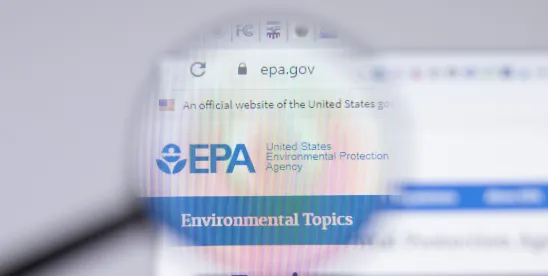On June 18, 2025, the Supreme Court decided Oklahoma v. EPA and EPA v. Calumet, a pair of cases that focus on the Clean Air Act’s (CAA or Act) venue selection provisions.
The judicial review provisions of the Act send review of “nationally applicable” EPA actions to the DC Circuit and review of “locally or regionally applicable” EPA actions to the regional circuits. See 42 U.S.C. § 7607(b)(1). However, in an exception to that rule, venue may lie in the DC Circuit for regionally applicable actions that are “based on a determination of nationwide scope or effect.” In the Court’s two recent decisions, it explained that the CAA venue analysis called for a two-step inquiry. First, courts must decide whether the EPA action is nationally applicable or only locally or regionally applicable; if nationally applicable, the case belongs in the DC Circuit. Second, if locally or regionally applicable, courts must decide whether the case falls within the exception for “nationwide scope or effect” to override the default rule of regional circuit review.
In Oklahoma, the Court held that EPA’s disapproval of the Oklahoma and Utah state implementation plans (SIPs) belonged in a regional circuit, not the DC Circuit. At the first step, the Court found the SIP disapprovals were “[c]learly” “locally or regionally applicable.” The Court held that the disapproval of a SIP by its nature (and by statute) is always a locally or regionally applicable action. EPA cannot change that by grouping multiple state-specific disapprovals into one Federal Register notice. At the second step, the Court set forth a high standard that EPA must clear in order to show that a locally or regionally applicable action is based on a determination of nationwide scope or effect: That determination must lie at the “core” of EPA’s decision, i.e., it must serve as the most important part of EPA’s rationale. EPA receives no deference on this issue. If it is “debatable” whether such a determination lay at the core of EPA’s rationale, then the exception does not apply. In Oklahoma, the Court explained that the SIP disapprovals were based on a variety of state-specific facts and that EPA’s various nationwide determinations were not the primary reasons for disapproving the SIPs. Thus, the exception did not apply, and the litigation belonged in the Tenth, not DC, Circuit.
In Calumet, the Court reached a different conclusion regarding challenges to exemptions under the CAA’s renewable fuels program for fuel refineries. Although EPA’s denial of exemption petitions was “locally applicable,” the Court concluded that EPA had relied on national legal and economic determinations that applied “generically to all refineries, regardless of their geographic location.” Because those nationwide determinations provided the basis for denying the individual exemption requests, they lay at the core of EPA’s action and thus triggered the exemption to bring venue to the DC Circuit.
Together, these decisions clarify the line between national and local or regional EPA actions for purposes of venue under the CAA. Oklahoma suggests that actions grounded in state-specific facts (like SIP disapprovals) belong in regional circuits, even if decided in omnibus fashion or using a shared analytical framework. Calumet shows that when EPA applies a uniform national rationale not grounded in state- or region-specific considerations, challenges belong in the DC Circuit.
The Oklahoma decision will be particularly helpful in clarifying proper venue in other cases involving state plans. For example, under the current administration, EPA is proposing to approve state plans for “reasonable progress” on visibility improvement during the second planning period. Venue for any challenges to those EPA approvals will presumptively lie in the local circuits.







 />i
/>i
